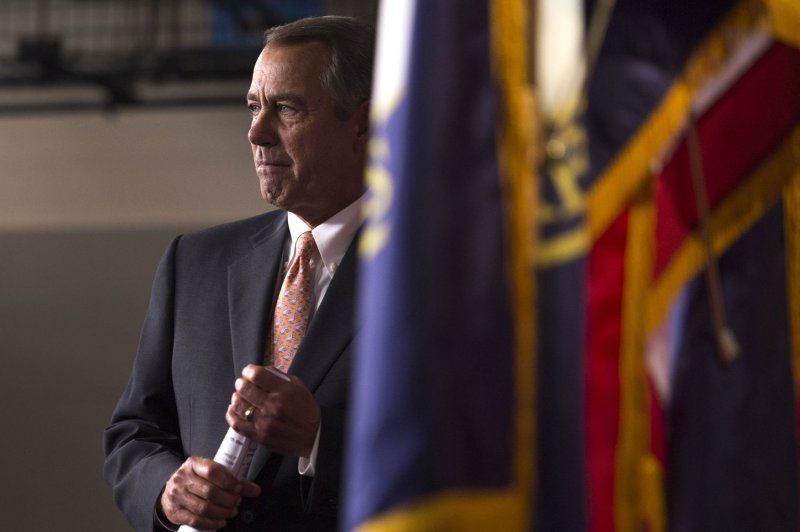House Speaker John Boehner, R-Ohio, used what's known as the "queen of the hill" rule in allowing House Republicans to choose from multiple submitted budget proposals. Photo by Kevin Dietsch/UPI |
License Photo
WASHINGTON, March 25 (UPI) -- The U.S. House of Representatives on Wednesday approved a massive budget near $4 trillion for the coming fiscal year by invoking a rarely used congressional tactic called the "queen of the hill" rule.
Republican party leaders have been trying to come up with a budget that addresses concerns over deepening the deficit and overspending on defense.
Lawmakers rejected the first budget proposal by a vote of 105-319. But GOP legislators had opted to invoke a little-used, little-known parliamentary tactic known as the "queen of the hill" rule. The method allows lawmakers to submit more than one budget proposal and finalize whichever majority-approved version receives the most votes.
Subsequent to the initial proposal's rejection, a similar alternate budget -- which included an extra $2 billion for the Pentagon's war chest -- was passed by an initial vote of 219-208 and a final vote of 228-199, USA Today reported Wednesday.
Leaders went for the "queen" option largely because they expected dissenting opinions among Republicans, which have been abundant since the start of 2015 and which have handed Democrats a much-needed political boost, The Washington Post reported.
Admitting six different budget versions on the House floor Wednesday, GOP leaders minimized the risk that lawmakers within its ranks might again disagree to the extent of further party destabilization.
The version that was ultimately adopted was similar to the original blueprint, but included an extra $2 billion for the Defense Department's war chest and removed a stipulation that mandated the extra spending to be offset by cutting the budget elsewhere.
"I think they did a real good job of listening and taking our input," Rep. John Fleming, R-La., said.
The budget's passing came at a time of continuing Republican disagreement that started around the start of 2015. In that time, Republicans have become mired in stalemate on some issues, like immigration and healthcare, and some even attempted to have House Speaker John Boehner removed from the leadership post.
The GOP's original budget planned to spend $3.8 trillion for fiscal year 2016 and projected government revenues of $3.5 trillion. It also projected a budget surplus by the year 2024.
That budget failed because some GOP lawmakers felt there wasn't enough money ($94 billion) earmarked for defense. With the war chest fuller in the alternate version ($96 billion), it received the necessary votes to pass.
The remaining four alternate budgets introduced to the floor were rejected by the House.
While a victory for the GOP, the budget approval continued concern for some Democrats.
"Neither prices are right here," Rep. Chris Van Hollen, D-Md., the ranking Democrat on the Budget Committee, said.
The Senate is working on its own budget proposal this week. Both houses of Congress must approve whichever budget is ultimately implemented.
The final congressional budget may also attempt to repeal President Barack Obama's healthcare reforms, which have been repeatedly targeted by Republicans since they took effect.















